
There are a limited number of tests a veterinary practitioner will be required to perform when presented with a patient with skin disease. For some of these tests, subtle and simple techniques can influence the accuracy of the results.

There are a limited number of tests a veterinary practitioner will be required to perform when presented with a patient with skin disease. For some of these tests, subtle and simple techniques can influence the accuracy of the results.

Veterinary dermatology is a relatively straight forward aspect of veterinary medicine to deal with because the diseased organ is able to be visualized and palpated by the veterinarian but also by the technician and owner. The technician can and should play an integral role in cases with skin disease.

Pruritus and the various aberrations of skin and hair coat that it provokes are, by far, the most common reasons for which cats are presented to veterinarians for dermatologic diagnosis.

Treatment of otitis externa is dependent on identifying and controlling the predisposing factors, primary and secondary causes and perpetuating factors whenever possible. Inadequate treatment and reversal of the progressive pathologic responses, tympanic membrane alterations, and otitis media often leads to treatment failures or recurrences.

Tips on performing skin cytology, dermatophyte cultures, and more.

Some rules of thumb for performing skin biopsies.
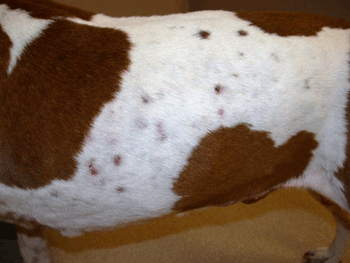
What's the most likely diagnosis in this dog?

A link to "Treatment of canine atopic dermatitis: 2010 clinical practice guidelines from the International Task Force on Canine Atopic Dermatitis."

I've found bandaging an ear after an ear hematoma repair to be a challenge.

Veterinary dermatologist Dr. Paul Bloom gives his thoughts on this reader question.

The main concern with this condition is a secondary bacterial folliculitis and furunculosis. The infection often requires six to 12 weeks of oral antibiotic therapy.

A common misdiagnosis of ear edge dermatitis in certain dog breeds.
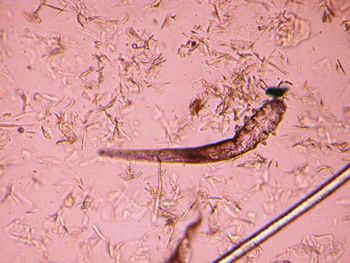
What's causing this dog's pruritus and greasy truncal coat?
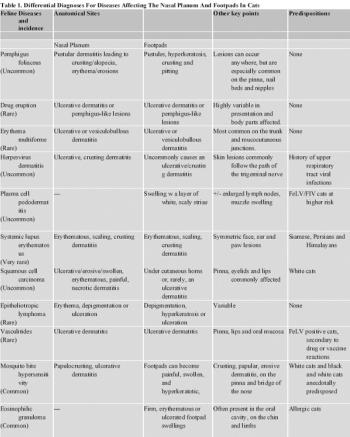
Diseases of the nasal planum and footpads in cats and dogs range from life threatening diseases to benign conditions that require long-term therapy to maintain control. It is of the utmost importance to properly diagnose the diseases that affect these locations, as the treatment and prognosis varies greatly depending on the disease entity.

Flea infestation and flea allergic dermatitis in both dogs and cats remains one of the most common reasons owners bring their pets to the veterinarian. In the past 20 years, the advent of new products has revolutionized our ability to control fleas and, specifically, keep flea allergic patients comfortable.
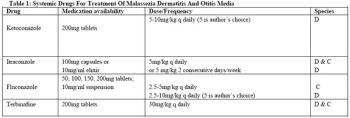
Malassezia pachydermatis is a commensal yeast organism that is a normal resident of the skin, mucosa, and ear canals. In dogs and cats, Malassezia pachydermatis colonizes the skin soon after birth, and is the primary yeast species associated with skin and ear disease.

Be familiar with the flea life cycle and where the stages live. Things you may not know:

Diagnosing and treating the pruritic cat can be difficult due to the variations in clinical presentation and the large number of possible underlying causes. In addition, many cats over- groom and lick in hiding, i.e. they exhibit their symptoms in secret.

Pruritus is the most common symptom of skin disease in the dog, and having a methodical approach to itchy dog cases is critical in ensuring successful management. A thorough history, observant physical examination, and appropriate diagnostic tests are the fundamentals that will lead to effective therapy.

Seborrhea is the abnormal (increased) production of skin cells (keratinocytes) and sebum that manifests clinically as scale and / or increased oil secretions on the skin and hair coat. Most often seborrhea occurs secondary to another dermatologic problem; less often it is a primary problem.
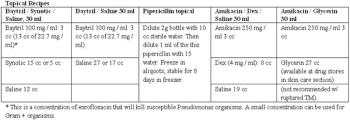
On the inside: I run. And I wish I could refer them to someone else. And it does not help that we have little evidence-based studies to guide therapy for Pseudomonas otitis.

Cali was acquired by the owners at 8 weeks of age and has lived in Los Angeles her entire life. Her owner is a large animal veterinarian, and is very compliant. There are no other pets in the household, although she does frequent a barn where she does have some contact with horses.

Demodex spp are mites that normally inhabit hair follicles and sebaceous glands. Each animal (including man) harbors its own species-specific mite species.
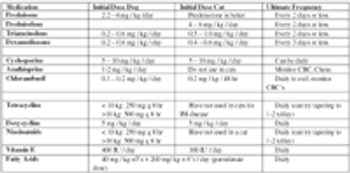
While no day in veterinary practice is routine, there are weeks that are more filled with the usual offenders such as vomiting, diarrhea, and pets itching from allergies. You begin to yearn for an exotic diagnosis. In the dermatology world, diagnosing an immune mediated disease carries a sexier ambiance, shows your expansive knowledge, and gives you a swagger as you walk through the treatment room.

Pruritus, in its various forms, is a common complaint in small animal practice and has a multitude of causes. Many clients want to know what is making their pet itchy, they want an accurate answer quickly, and they want immediate relief for their pet.